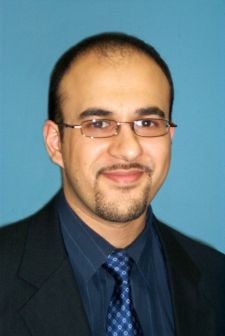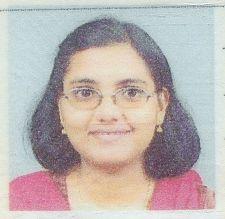
There are many types of cancer, where the severity of symptoms depends on the site and character of the malignancy and whether there is metastasis. A definitive diagnosis usually requires the histological examination of tissue by a pathologist. Most cancers can be treated and some cured, depending on the specific type, location and stage.
Once diagnosed, cancers are usually treated with a combination of well-known first-line therapies, which include surgery, chemotherapy and radiotherapy. In some occasions, first-line therapies are not always successful in cases when the cancer has metastasized to other regions, the type of cancer and its location or the complexity of the disease and the type of therapy used may have the potential to harm healthy tissue. As research develops, treatments are becoming more specific for the type of cancer pathology. Drugs that target specific cancers already exist for several cancers.
An alternative approach to the surgical removal of tumors is eliminating the tumor cells using heat while sparing nearby healthy tissue. The technique is called Radio Frequency Ablation (RFA), and is a minimally invasive procedure performed by interventional radiologists. Image-guided percutaneous RFA has been introduced into clinical practice relatively recently, where the goal is to induce thermal injury to the tissue through electromagnetic energy deposition. It is now considered a feasible treatment option for patients with primary hepatocellular cancer or limited liver metastases.
As the technology evolves, RFA is being evaluated for other types of tumors. RFA procedures are performed with the use of X-rays and other techniques such as ultrasound, computed tomography (CT) and magnetic resonance (MR) and more recently positron emission tomography (PET) to see inside the body without surgery during procedures as well as being used to determine whether patients are suitable candidates for RFA therapy.
The thermal damage caused by RF heating is dependent on both the tissue temperature achieved and the duration of heating. Heating of tissue at 50 to 55 degrees Celsius for four-to-six minutes produces irreversible cellular damage. At temperatures between 60 degrees Celsius and 100 degrees Celsius, near-immediate coagulation of tissue is induced, with irreversible damage to mitochondrial and cytosolic enzymes of the cells. Target tissue necrosis is achieved as the tissue gradually desiccates and eventually loses its ability to conduct current. At 110 degrees Celsius, tissue vaporizes and carbonizes. In summary, the heat generated in tissues treated with RF energy causes permanent damage to proteins that are necessary for life, and the cancer or other diseased cells are destroyed. For adequate destruction of tumor tissue, the entire target volume must be subjected to cytotoxic temperatures.
In Europe, cancer groups and national bodies of clinical excellence have recognized the benefits of RFA treatment for pulmonary and hepatocellular carcinomas. From clinical studies, RFA has been found to destroy tumors at better rates in comparison to other therapy techniques such as percutaneous ethanol injection (PEI); however, as this therapy is relatively new, it is difficult to obtain a complete assessment on its true benefits compared to first-line treatments.
Compared to the 1.6 million deaths caused by cancer in Europe, an estimated 2.6 million new cases of cancer each year represent over one quarter of the world burden of cancer. An emerging treatment such as RFA has limited clinical use, however, its use continues to increase to treat those diseases and aid the clinical effectiveness of these novel therapies.
Furthermore, RFA is fast becoming a technique preferred by many cancer experts because it can reliably destroy a small, targeted area of tissue without affecting healthy structures beyond the treatment site. The awareness and use of RFA is increasing, made evident by the growth of numerous RFA systems produced by a handful of companies globally. The continued acceptance of this procedure is a testament to the technology and the hard work that interventional oncologists have done over the last decade. Many clinical studies have now been published that analyze the local and distant recurrence rates of numerous tumors following RFA treatment.
Challenging Times Ahead
Current results for RFA are encouraging and suggest that ablation of tumors using RF can improve survival, reduce pain and improve quality of life in patients with unresectable tumors. However, additional clinical studies are required to further evaluate the place of RFA in the management of primary tumors and metastases, which require referrals from hospital consultants and medical staff in the oncology sector.
During early stages of cancer, patients are routinely referred for first-line treatments other than RFA, which has been handicapped due to a slow market acceptance. Clinical studies have continually outlined that treating patients with RFA at the earliest possible stages of cancer gained better chances of survival due to the greater safety margins.
However, treating malignant tumors during later stages of development lowers the safety margin and thus significantly affects the success of the clinical outcome. This has had a two-fold effect for RFA, which in some countries is being better perceived as a palliative care option rather than for curative support. This is leading to a slow adoption of market acceptance. The challenge is now to improve RFA recognition in comparison to first-line therapies and thus increase its adoption rate.
Another battle for RFA is that it can be an expensive treatment option in comparison to some first-line therapies. RFA systems are generally composed of a RF generator, accompanying electrode needles along with various accessories that can make the system expensive to run, especially when treating multiple tumors in parallel. The use of this technique may be further delayed, as the cost factor can lead to surgeons to use other treatment options, which require lesser costs involved.
The RFA market in Europe is emerging from an embryonic to a growing market, especially due to the numerous types of cancers that could be eradicated using this technique. The prevalence and incidence of disease, the clinical success to combat cancer using RFA, a rise in clinical studies on other cancers and a wider acceptance for RFA from the medical community are expected to have a positive effect on the growth rate for RFA market in Europe. The RFA market in Europe is anticipated to grow at a compound annual growth rate of 13.9 percent during the next several years. End-user willingness to prescribe RFA treatments for patients with cancer that are untreatable by first-line chemotherapy or radiotherapy, inoperable by surgical means or when conventional treatments have been exhausted is forecasted to increase the market revenues and growth.
Future Outlook
Although the benefits of RFA to treat diseases are huge, there are certainly many hurdles ahead that still need to be addressed before this technique can become a first-line therapy. To address specific issues, newer methods for RFA are continually being developed that involve operating multiple monopolar or bipolar probes simultaneously and rapidly switching the power outputs between them. This technology improves the speed and effectiveness of RFA by targeting larger amounts of tissue with each placement of the electrodes. The continued acceptance of this procedure has led to the development of improved technology and, in turn, the exploration of the boundaries of RFA. RFA technology will soon allow many diseases to be treated in a minimally invasive way and thus it holds great promise for improving health and prolonging life.
Amarpreet Singh Dhiman, Ph.D., joined Frost & Sullivan in July 2004 as a research analyst working in the Drug Discovery & Clinical Diagnostics (DDT/CD) focus area. Prior to joining Frost & Sullivan, Dhiman worked as a consultant product manager and project coordinator for a growing dental company (Benchmark Dental Co.) and orthopedic company (Coripharm GmbH & Co KG). In this role, his knowledge of dental prosthetics and bone cements was utilized to drive the business, consult on various projects and increase the research scope within Europe and Commonwealth countries. He also has product management, operational, information technology and sales experience. Dhiman holds a Ph.D. in Dental Prosthetics from Queen Mary (London) and has published many papers in peer-reviewed scientific journals. In addition, Dhiman has a Master’s Degree in Biomedical Engineering from Imperial College (London) and two diplomas, one of which is from the Centre of Technology (UNICAMP, Brazil) in Prosthetics.
Kezia Jasper joined Frost & Sullivan in May 2006, as a research analyst with the Medical Devices Team of the European Healthcare practice. Prior to joining Frost & Sullivan, Jasper was a senior territory manager for Eli Lilly & Co. where her job involved promoting key Lilly products to leading specialists. Jasper also has experience in medical information services, which involved data sourcing, compilation and presentation for physicians. She also worked with the marketing department in sourcing and compiling necessary information. Jasper holds a first class Bachelor’s degree (B.Sc.,) in Nutrition & Dietetics from Women’s Christian College, Chennai, India.


